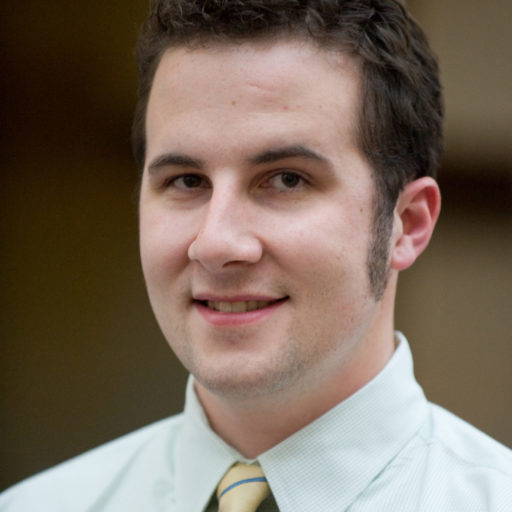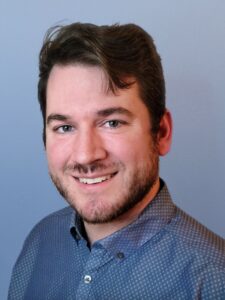We want our students to be successful this year. No teacher would disagree with that statement. But there are many ways to define that success, and many ways to measure it. The goal of education is not limited to content and facts and should promote skills like curiosity, resilience, and critical thinking. All of these skills are the hallmarks of the learning process which is a difficult, non-linear path that students grapple with everyday. This struggle should be celebrated as their success, but for many students, their view of success comes down to what letter they see in a gradebook.
This can be particularly true in schools like ours. We work in a suburban school with a historical reputation for academic excellence. The expectation from our community is for excellence in the classroom and across the school is shown by high achievement on state standardized testing, high graduation rates, graduates attending elite universities, and students receiving awards and recognition. This definition is celebrated and expected while other aspects of student achievement not captured by these metrics are ignored. The cost of measuring academic excellence by average, grade rank, or percentile automatically means there is a percentage of students who will never be successful because of the nature of these metrics.
This perception of ubiquitous academic excellence has created challenges for innovation and larger initiatives to change and adapt pedagogy and professional learning. As innovative teachers, we struggle to foster meaningful changes on a broader scale outside of our own classrooms and departments, in part, because this definition of academic excellence justifies the pedagogical approaches used to achieve the marks. The high test scores eliminate the need to change or adapt despite changing demographics, social emotional deficits, and changing pedagogy and best practice. The business as usual approach breeds complacency in staff and often fails to meet the needs of a changing student population.
For us, like for many educators, the COVID-19 pandemic provided a moment to question current practices. The challenges of teaching through the pandemic forced many teachers to break from the norm and experiment with new and different approaches. It challenged us to rethink many of the foundational purposes of school and focus on supporting student social and emotional wellbeing in order to engage in conceptual learning. This shifted how many teachers engaged with their students and led to new approaches to how teachers assessed their students’ learning, since traditional methods were unviable in fully digital classrooms.
In our personal experience, our school shifted learning away from rote practice and a points-based economy to find more authentic opportunities for students to demonstrate learning. We focused on community and connection to mediate the disconnection felt by learning in hybrid or online formats. We adapted our teaching to meet the needs of the students who struggled the most and allowed for grace and flexibility in learning and assessment. For example, students were challenged to demonstrate their learning through action and explanation for topics that would normally be assessed with a test. Biology students were challenged to demonstrate their understanding of protein synthesis by filming a cooking show where they chose how to best illustrate the important steps and components of the molecular process. Mixing bowls became ribosomes, flour, sugar, and other ingredients became amino acids, tRNA, and other molecules. This approach created student ownership and investment in their learning.
We also implemented new technologies to enhance and extend learning beyond the classroom and to better engage our digitally native student population. For example, our physics teachers utilized Google Meet breakout rooms in conjunction with online lab simulations to create an environment where students could still work with small groups collecting data to answer a driving question, but also share this data in a large group setting so different results could be shared. This put more of the initiative on the students, which strengthened the connection to the science practices, deemphasized specific content knowledge, and promoted more conceptual understanding. Most importantly, as a staff, we talked about teaching, pedagogy, and facing the challenges of teaching during a pandemic together to create consistency in expectations for the student experience.
The COVID-19 pandemic brought to light the challenges that teachers face when innovating in the classroom. New teaching strategies, approaches, and philosophies are often met with resistance from students, parents, and others whose vision of what learning and school looks like was based on prior experience and media portrayal of “what school should be.” These expectations put pressure on teachers who innovate to conform to the antiquated system of education. During the pandemic, the process of learning was brought into full light in kitchens and living rooms across the country. Teachers were forced to be transparent and vulnerable in their practice and approach. We innovated and adapted, there was success and failure, but collectively we made it through, modeling the learning process we hope to cultivate in our students. Unfortunately, that spirit of innovation was driven by desperation and the need of the moment. Once things went “back to normal” outside the classroom, the same was expected for inside the classroom. The intrinsic need to return to the familiar resulted in a missed opportunity to reflect on the system as a whole and build on some of the new flexible strategies that had been successful in a less rigid structure.
We challenged perceptions of how excellence in education is defined during distance learning. But, as regulations relaxed and we began to return to school in person, many of the same methods that were successful in modified learning models were either met with pushback or were viewed as substandard. Strategies used out of necessity during remote teaching were blamed for “learning loss” upon the return to in-person instruction. This resulted in many of the innovative strategies from digital learning being cast aside completely instead of integrated into existing practice. Conversations about pedagogy and innovative teaching strategies also decreased and much of teachers’ focus turned back to our own classrooms to address real or perceived deficits in skills and knowledge.
Despite this expectation to return to the pre-pandemic status-quo, some teachers, ourselves included, found ways to leverage the innovative momentum of pandemic learning to enhance and transform our practice. Our experiences fueled departmental-level conversations to build a more equitable grading system using competency-based grading and toward more consistency in grading practice across all science courses. However, the sudden shift away from collective innovation created silos between teachers who returned to more traditional practices and those who continued to innovate. This kind of division breeds conflict and discontent through a lack of collaboration and communication. To break down the silos and to align practices, teachers must have the opportunity and time to communicate and collaborate beyond their content areas. Removing silos will help support a robust community of learners for students and teachers alike.
Removing silos will help support a robust community of learners for students and teachers alike.
An impactful topic for any cross-content learning community to begin their work is looking at how we assess students. Grades are a traditional measure of excellence for achievement and academics, but grades can also be subject to the approach within the classroom and the values of the teacher. Grades become an economy of points within the classroom, where every action has a different exchange-value in the gradebook. Shifting grading schema toward a more equitable approach would reduce the divergence in value across contents and classrooms and redefine excellence based on academic understanding rather than behavior, participation, or compliance (Feldman, 2019).
Traditional grading based on participation, completion, or attendance creates barriers to learning and has placed emphasis on student behavior rather than academic understanding. Students who do not meet those traditional definitions of success are left underserved and discouraged. The challenges of learning during the COVID-19 pandemic brought to light the need for a more dynamic approach toward grading to ensure that each student can feel empowered and that the grade represents learning and not personal biases or behavioral compliance. Shifting towards a competency-based grading system and creating authentic assessments helps support student agency and ownership of learning. By focusing on communicating the understanding a student has gained through authentic assessments, we can begin to decrease the punitive impact a traditional point-based system can have on students.
In order to embrace these unconventional strategies and support educators in making these difficult changes, we as teachers, schools, and communities need to first redefine our understanding of excellence to reflect more than a single metric. If we continue to celebrate excellence as the top percentage of students based on test scores and GPAs, we are sending a message to the majority of students that their achievements are less important because they didn’t get As or take Advanced Placement classes. To create a more equitable learning system, we need to foster a definition of excellence that is able to celebrate all of our students’ achievements and emphasize the uncomfortable process of learning. By creating authentic learning opportunities, students can place importance on how they learn a new skill or new information, and be assessed on their growing competency in that skill. This supports a system that celebrates the work that they are putting in every day as well as setting them up for future success as learners.
Dan Kizaur teaches physics, electronics, and engineering at Mahtomedi High School in Mahtomedi, Minnesota. He is also the lead mentor for Mahtomedi’s FIRST™ Robotics team and coaches swim and dive. You can reach Dan at djkizaur@gmail.com.
Jim Lane teaches high school biology, field ecology, and biomimicry at Mahtomedi High School in Mahtomedi, Minnesota. He also mentors the MAPS Protein Modeling Team and is the advisor of the school’s Power Walking Club. You can reach Jim at jim.lane@knowlesteachers.org.






